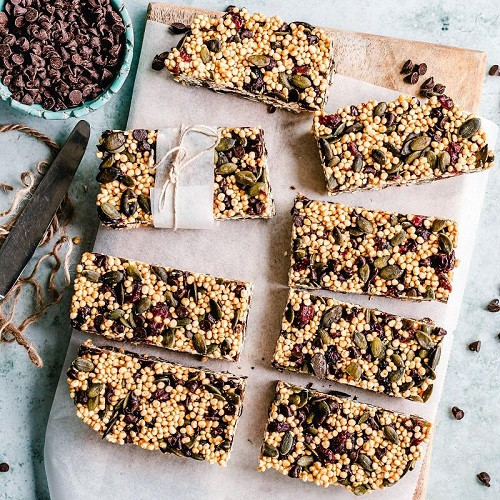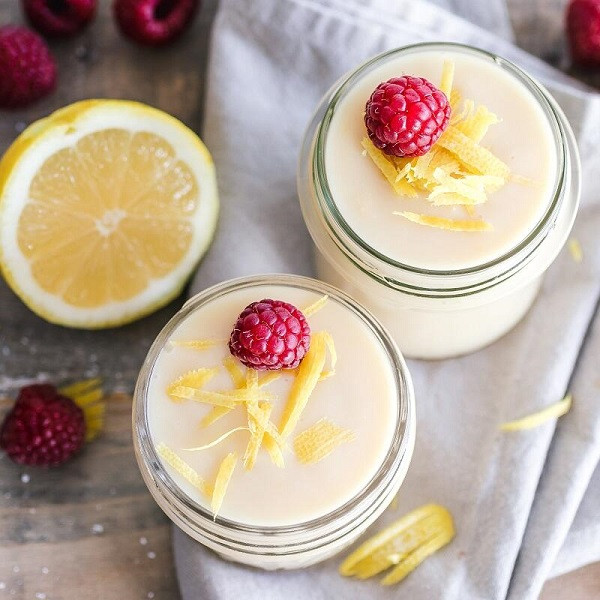✕

Column: industry Tag: ingredient,rice starch,fruit fibers,methylcellulose Published: 2023-04-06 11:24 Source: www.foodingredientsfirst.com Author: Benjamin Ferrer
Simple, recognizable ingredient lists continue to gain shelf space as consumers increasingly crave “clean” foods. The trend is evolving as health-conscious consumers scrutinize food and beverage labels as they are much more familiar with technical ingredients like hydrocolloids. Among spotlighted solutions are introductions of multifunctional rice starch, natural baby formula ingredients and upcycled fruit fibers for softness and chewiness in baked goods.

FoodIngredientsFirst speaks to experts at Solvay, ADM, CP Kelco and Ingredion to discuss the latest host of natural ingredient food innovations.
According to Innova Market Insights, globally, 15% of new food and beverage products carried no additives/preservatives claims in 2021-2022. Penetration was highest in Australasia, but they have lost ground there and in developed markets, with fastest growth in MIddle East/Africa and Asia.
The market researcher details that categories with the highest penetration of additive-free claims include those aimed at children and those offering complete everyday nutrition or hydration. Use is lowest in pure treat categories such as confectionery and alcoholic beverages.
In some areas, Innova Market Insights reveals there is a growing expectation of the removal of additives, so many brands are moving claims to the rear of packs and using the front to emphasize other messages. Terminology is also evolving, with terms such as “junk” or “nasties” being used to describe artificial additives in communications.
Meanwhile, Solvay-cited global data highlights that 46% of UK adults associate a clean eating diet with being good for you. Meanwhile, 35% of US consumers agree that they want more transparency in food product ingredients.
“Furthermore, 77% of German consumers agree that they would like to see more products with natural, non-artificial flavors,” shares Corinne Duffy, global technical marketing manager at Solvay.
“Clean label encompasses all the F&B categories. From the innovative plant-based and nutritional products, to the demanding categories – like infant formula baby food – there is no exception,” she stresses. “It is a way for F&B players to differentiate and keep a step ahead of the competition by reinforcing consumers’ intimacy.”
“Solvay offers for instance a specific Rhovanil Natural baby food grade vanillin, with the clean label benefits but also the full traceability required by such a food category.”
Rhovanil Natural imbues chocolate, caramel and malt flavors to complement single-flavor chemicals and cocoa extracts. It also accentuates all types of fruit flavors, including natural strawberry, raspberry, banana and fruit blends, which are transformed into sweet, creamy and candy-like profiles for children.
Multipurpose rice starch and fruit fibers
Ingredion recently launched a multifunctional rice starch under its Novation Lumina brand.
“It not only offers amazing outstanding textural performance and shelf life stability in dairy products, sauces, meat and meat alternatives but has market leading sensory characteristics and is the first rice starch to be made from rice under the Sustainable Rice Program,” details Daniel Haley, global platform leader, Clean and Simple Ingredients at Ingredion.
“We also just launched our very first Fibertex citrus fibers,” he continues. “Leveraging the waste from the juicing and pectin industry, these patented, natural dietary fibers also offer unique softness and chewiness characteristics in baked goods and snacks.”
Highlighting the financial gains for companies pivoting toward cleaner recipes, Ingredion’s Atlas global manufacturers study from last year discovered that offering clean label products has “resulted in higher revenue and margins for half of respondents or more.”
Around 40% of manufacturers revealed that they have increased pricing as a result of clean label products. Haley adds that 50% reported increased margins and 58% reported an increase in overall revenue by offering clean label products.
Two jars of cream pudding with shaved lemon peel on top and a slice of lemon laying next to them.

Pectin from upcycled citrus fiber sourced from the juicing industry is a rising star among stabilizing ingredients.
Cleanly modulating texture and body
ADM’s consumer research shows that people are increasingly recognizing hydrocolloids on product labels, with 44% of US consumers showing familiarity with specifically named hydrocolloids.
“We leverage our deep formulation expertise with our Stabrium portfolio of gums, emulsifiers and stabilizers to replicate crucial sensorial attributes and meet consumer clean label demands,” details Mike Medina, category marketing director, Specialized Nutrition & Dairy at ADM.
“This line of plant-based specialty ingredients includes emulsifiers, polyols and hydrocolloid solutions that help control and modify both the texture and mouthfeel in various applications across multiple food and beverage categories.”
ADM recently introduced its Stabrium Hydrocolloid Solutions 100 and 200 to enhance the eating, drinking and sensory experience in plant-based beverages, yogurts, frozen desserts and more through targeted texture and added rich body thickness.
“Due to their excellent sensory support, these plant-based texture solutions help reach clean label targets by mitigating the need for gelatin, mono- and diglycerides in dairy and dairy alternative products,” says Medina.
“Overall, our Stabrium Hydrocolloid solutions bring transparency, stability and functionality to dairy and alternative dairy offerings, while helping brands address formulation challenges.”
Shift away from methylcellulose
CP Kelco observes a desire from product developers to move away from chemically modified methylcellulose as the primary stabilizer/binder and toward nature-based ingredient alternatives that are easier to recognize.
“We have developed several solutions that can help deliver the meat-like experience, texture and juiciness that consumers crave with nature-based ingredients such as pectin, gellan gum and citrus fiber,” highlights Jack Pearson, director of sales technical service at CP Kelco.
“The same is true with plant-based yogurt alternatives. To combat texture and stability challenges created by plant proteins, product developers usually rely on modified starches.”
CP Kelco also offers ingredient solutions such as “easily recognizable” Genu Pectin and Nutrava Citrus Fiber, upcycled from citrus peels, an abundant byproduct of the juice industry near the company’s plant in Brazil.
These solutions aid the creation of a creamy eating experience that is closer to dairy with a rich mouthfeel, effective syneresis control and label-friendly positioning.
“Nutrava Citrus Fiber, in particular, can act as an alternative to emulsifiers by providing emulsion stability when emulsifiers are removed, as well as stabilizers, fat, gums, starch and eggs in baked goods,” explains Pearson.
In other ingredient developments, as manufacturers set ambitious goals to reduce their carbon footprint and move away from petrol-based stabilizers, Pearson highlights that carrageenan looks “promising” for formulating meat, egg and cheese alternatives.
“With its unique gelling and thickening properties, CP Kelco’s Genu Carrageenan offers many desirable functional benefits for manufacturers looking for a plant-based, vegan alternative to gelatin and animal protein,” he details.
“We continue to work closely with communities in Zanzibar, teaching locals how to grow and harvest seawee d, which is a renewable and sustainable, raw material.”
Nuances of “clean” definition
Pearson at CP Kelco flags that there is still no legal or regulatory definition for “clean label.”
“It is one of those terms where the meaning evolves over time based on consumer perception and familiarity,” he notes. “As health, sustainability and environmental issues become more important to consumers, we have seen the trend grow to encompass what is ‘good for you’ and ‘good for the planet.’”
Looking ahead, when asked about synthetic additives that are losing mass marketability due to their perceived health impact, Haley at Ingredion comments: “I would not personally use the term ‘red listed.’ There are ingredients that have low consumer acceptance and those that have high acceptance.”
“This varies by country and application,” he notes. “In some regions, one of the ingredients that has been falling in acceptance the most is palm oil. Another is titanium dioxide.”
“Generally speaking, any ingredient that does not carry a traditional, store-cupboard name tends to have relatively weaker acceptance. My team is focused on developing solutions that help customers create products made with highly accepted ingredients, without compromise in terms of eating experience, for which a large percentage of consumers will pay more.”
Previous:Africa's “forgotten” food crops key to support climate-resilient, healthy and profitable food systems
Next:Insempra unveils natural violet and raspberry fragrance and flavor agent crafted by fermentation
Hot key words
Hot Products
Popular Vendors